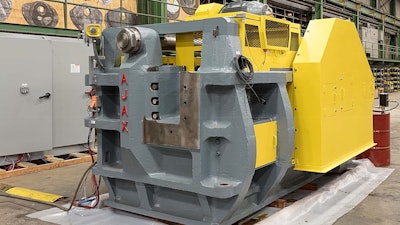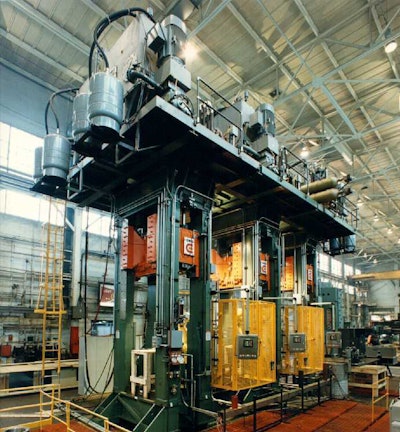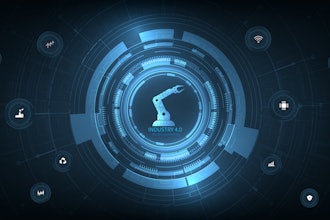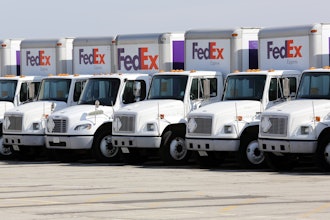
Global demand for rebuilt forging equipment is surging, driven in part by a dramatic rise in the need for military ordnance spurred by Russia’s invasion of Ukraine. As in past wars and conflicts, the demand for forged parts often increases as governments seek to replenish depleted stocks of artillery shells, tanks, aircraft parts and weapons. According to recent news reports, numerous nations have committed billions for new ordnance purchases in 2024.
To meet this demand, forgers are dusting off sometimes decades-old unused or underutilized forging equipment and seeking complete rebuilds from the Original Equipment Manufacturers (OEMs) to ramp up production quickly, even if new forging equipment is ordered and on its way.
“Rebuilding is often the fastest, most economical means to get worn or mothballed equipment back into production when purchasing new equipment may not be feasible. As such, it can bridge a gap in production before new equipment can be purchased, manufactured and delivered,” said Justin Wildfire, Rebuild Engineer, Products and Part Sales, Ajax-CECO-Erie Press (ACE), an equipment supplier in North America, with over a century of experience in custom designing and building presses and forming machines.
According to the Forging Industry Association, “Forged components are found in virtually every defense implement, from rifle triggers to nuclear submarine drive shafts. Heavy tanks, missiles, armored personnel carriers, shells and other heavy artillery are common defense-related applications of forged components.”
A forging’s versatility of size, shape and properties also makes it an ideal component in bulkheads, wing roots and spars, engine mounts, brackets, beams, shafts, landing gear cylinders and struts and wheels in jets, helicopters, piston-engine planes, military aircraft and spacecraft.
Robust demand for forged components is also expected to increase in the automotive, aerospace and power generation markets through the end of this decade. According to Grandview Research, the global metal forging market valued at USD 74.36 billion in 2021 is projected to grow at a compound annual growth rate of 7.7% from 2022 to 2030.
Given the demand, several scenarios could lead manufacturers to rebuild forging equipment instead of purchasing new, according to Wildfire.
Rebuilding is reconstructing a machine by removing all its parts and repairing or replacing them with OEM components to return them to manufacturer specifications. This can include replacing high-wear items such as bearings, bushings, seals and liners and inspecting and repairing the frame.
Rebuilding is often more efficient and cost-effective than purchasing new and is ideal for quickly getting equipment operational again in as little as a few months. Consequently, forgers opt to rebuild aging forging equipment, which can date back to the 1920s in some instances.
In some instances, the forging equipment may no longer be in use, requiring updating, modifying for new product lines, or servicing to be restored to original specifications. A rebuild can also increase the production capacity of slow, inefficient, or unreliable equipment.
 As defense contractors and other manufacturers consider how to meet the rising production demand for forged parts, rebuilding their equipment with the OEM will often be the fastest and most economical choice.Ajax-CECO-Erie Press
As defense contractors and other manufacturers consider how to meet the rising production demand for forged parts, rebuilding their equipment with the OEM will often be the fastest and most economical choice.Ajax-CECO-Erie Press
According to Wildfire, the high-impact nature of forging eventually takes its toll over time. When this occurs, parts will inevitably need to be replaced and a rebuild may be the best solution to extend the life of the forging equipment.
At this point, the choice is to contact the OEM to rebuild the equipment or contract with a third-party rebuilder. The decision is significant, given the need for a complete, dependable rebuild that will perform as expected for many years.
Rebuilders often use a reverse engineering process to create their parts or have them machined at local CNC shops. Although this approach may work in the short term to "get the equipment up and running," it ignores the long-term view.
Even rebuilders with experience working on various other types of equipment, such as stamping presses or injecting molding machines, may only partially appreciate the forces exerted during the forging operation.
According to Wildfire, critical engineering design data is lost when an independent rebuilder reverse-engineers a part, resulting in inferior part construction and premature wear or component failure. "Often they are rebuilding a machine without truly understanding the original design intent or the loads that will be placed on the parts and equipment," he said.
Without the benefit of the original design specifications, there is the risk of a wrong or sub-optimal part being used in the rebuild. Given the loads placed on a forger, even minor material changes can significantly affect equipment longevity.
Consider that forging equipment has to take the highest impact and accept the highest pressure of any metal-forming equipment. Simple aspects of a design, like the size and placement of a corner radius, can affect the longevity of a component.
There is also the risk of working with a rebuilder who takes shortcuts. A conscientious rebuilder will try to reverse engineer how the forging equipment was built, which may lead them to contact the OEM to source the correct part and access engineering drawings. However, some shops will apply a fresh coat of paint and not do all the work needed.
An incomplete or incorrect rebuild can be very costly to a manufacturer. Forging performance may be sub-optimal, the forging equipment may operate less efficiently and the life of the equipment may be shortened. Often, there is no warranty offered on the rebuild. Notably, there can also be operator safety risks and OSHA compliance issues.
Instead, as an alternative, it can be advantageous to work with the OEM for an equipment rebuild. The OEM has the original design specifications, critical materials and clearance specifications to jump on rebuilds and quickly finish the work. A vast range of information is required for a quality rebuild, such as critical data on high-wear parts, the material grade of the steel, the heat-treating process utilized and the required clearances used in the engineering of that forger.
"If a 60-year-old forging machine had a secondary heat treat surface coating as part of the original design specification that wore off over the years, it would not be apparent to a third-party rebuilder. Not adding a replacement surface coating during a rebuild could compromise longevity. However, the OEM keeps documentation on all modifications, which will be reviewed when replacing parts," said Wildfire.
With large spare part inventories, choosing an OEM can reduce service times compared to going to a rebuilder, who would first need to purchase a piece of steel and then machine it. The parts and the rebuild are also backed with a warranty from the OEM.
In addition, a rebuild can include significant automation upgrades when working with the OEM. For example, tasks once performed manually – such as moving heavy steel rods, pipe and other stock in and out of equipment – can be automated to improve worker safety. Many manual tasks can be replaced with a robot's mechanical "hand" or by integrating servos that lift, insert and deposit materials. Even tasks such as automated tooling changes can be completed with the push of a button.
Rebuilds can be approached in several different ways. The forging equipment can be sent to the OEM for rebuilding; the OEM can send repair personnel to the manufacturer's facility to rebuild equipment on-site, or the OEM can supervise a rebuild by maintenance staff. This allows the in-house staff to ask questions and better understand the operation of the equipment they are maintaining.
According to Wildfire, the OEM will typically perform a quick initial assessment of the forging equipment to determine how "true" it is if it is running. This involves measuring squareness and parallelism and checking for cracks and failure points. Afterward, the scope and timeline of the rebuild can be jointly determined by the OEM and the customer based on their requirements and priorities.
Since a manufacturer can have various types of forging equipment that need rebuilding, it can be advantageous to work with an OEM with the expertise and experience necessary to reliably bring a wide range of systems back to full productivity.
ACE, for example, has spent the past two decades acquiring established forging equipment brands and can now service, rebuild, or refurbish forging machines from Ajax, Chambersburg (CECO), Erie Press and LNF as the OEM. In addition, they similarly service all other brand-name forging equipment.
"The full range of forging equipment can be rebuilt by ACE, whether hammers, mechanical presses, hydraulic presses, or stretch forming equipment," said Wildfire.
On a recent rebuild, Wildfire reviewed the engineering drawings of a hammer originally designed by Erie Press in 1927. The hammer was still in production and the user sought to rebuild its top-end cylinder with some seals and rings.
"We provided engineering assistance to determine which parts needed to be replaced. The serial number led us to a set of prints developed around 1927. And we have worked on older machines than this," said Wildfire.
ACE also recently rebuilt an Erie Press hydraulic sizing press and a Bliss mechanical press for the government. ACE is rebuilding several vertical hydraulic press lines for the same facility that will be used to manufacture artillery shell casings.
As defense contractors and other manufacturers consider how to meet the rising production demand for forged parts, rebuilding their equipment with the OEM will often be the fastest and most economical choice.























